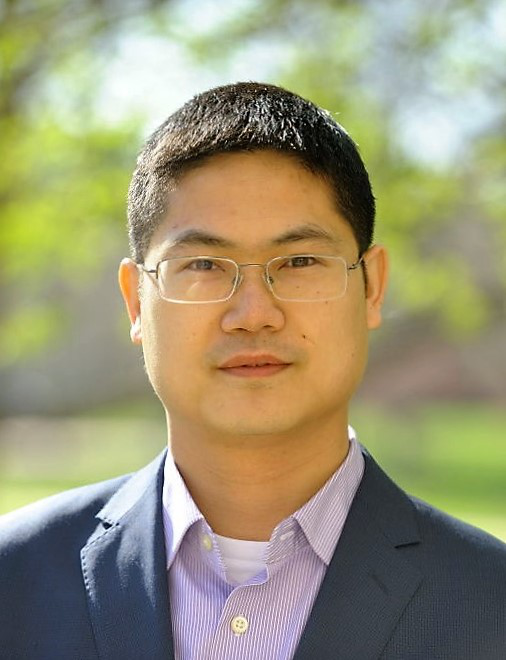主讲人:冯志钢 98858vip威尼斯下载文澜讲座教授

主办单位:98858vip威尼斯下载
讲座地点:文泉楼南206
主讲人简介:
主讲人简介:冯志钢,现任美国内布拉斯加大学经济系助理教授。冯教授于2009至2016年先后任职瑞士苏黎世大学金融系,美国普度大学经济系,以及美国伊利诺伊大学香槟分校经济系,主要从事宏观经济研究、讲授博士生宏观经济课程。目前在国际一流经济学期刊 International Economic Review, Quantitative Economics,Review of Economic Dynamics,Economic Theory 等发表论文多篇。应邀在国际知名大学、学术会议宣读论文30余次,多次访问美国联邦储备银行圣路易斯研究部,从事宏观财政政策研究,并多次担任Econometrica, Journal of Political Economy, Journal of Economic Theory 等国际一流期刊以及National Science Foundation的匿名审稿人,于2015年11月召集主办 Mini-Conference on Quantitative Macro and Public Finance
EMail:z.feng2@gmail.com
讲座内容及其时间见下:
Course Description and Learning Objectives
Objectives:I develop this course largely based on my teaching at University of Illinois, University of Zurich and Purdue University from 2010 to 2016. It is designed to offer the essential tools to study macroeconomics problem. The goal of this course is twofold. The first goal is technical in nature. More specifically, the course will teach you some standard tools and models that currently dominate macroeconomics. The second goal is more substantive in nature. In particular, the course will demonstrate how macroeconomists apply dynamic general equilibrium methods to derive quantitative answers to questions about which we are currently ignorant.
Textbook
·Recursive Macroeconomic Theory, by Lars Ljungqvist, and Thomas J. Sargent.http://www.econ.yale.edu/smith/econ525a/sargent3.pdf
·Macroeconomic Theory, by Per Krusell.
http://hassler-j.iies.su.se/courses/MacroII/Notes/book.pdf
·Recursive Methods in Economic, by Nancy L. Stokey, Robert E. Lucas Jr., and Edward C. Prescott.
·Link for all material used by this course:https://pan.baidu.com/s/1mi2WSZm
课件链接:https://pan.baidu.com/s/1c6LB_L1HqKCOWhGxG6bRnw
List of Topics&Tentative Agenda(subject to changes)
Why neo-classical growth model?
·Topic 1[June1]:A brief history of modern macroeconomics. We will discuss rational expectation; neoclassical and neo-Keynesian; financial crisis and the development of macroeconomics.
·Topic 2[June 2]:Solow growth model.We study Kaldor’s stylized facts about economic growth; the canonical Solow growth model; steady state analysis; transition dynamics.
How to analyze the canonical growth model?
·Topic 3[June 7]:One sector growth model in finite horizon. We formulize and study the optimization problem of a representative household who has finite planning horizon and face certain constraints.
·Topic 4[June7]:Lagrangian techniques in macroeconomics.We study how to rewrite the optimization problem with constraints into a Lagrangian problem. We also study the Kuhn-Tucker conditions.
·Topic 5[June 8]:Optimal growth model in infinite horizon setting. The connection between finite and infinite horizon problem. The terminal condition, no-Ponzi scheme condition and Transversality condition. We will discuss how to rewrite the sequential optimization problem as a functional equation problem (Bellman equation).
·Topic 6[June 8:Dynamic programming, fixed-pointtheorem, principle of optimality, contraction mapping, theorem of maximum, etc. Those are critical tools for analyzing the infinite horizon model. We will focus on understanding the results instead of deriving the math yourself.
·Topic 7[June 8]:Exercise and discussion I.
·Solow growth model. Lagrangian, Kuhn-Tucker conditions, Garcia and Zangwill transformation
·Dynamic programming, fixed point and contraction mapping
·Topic 8[June 13]:Solving optimal growth model using value function iteration.We study how to write the sequential problem into recursive problem, understand their equivalence, and how to solve the recursive problem by iterations. We also study the Euler equation, Envelop theorem.
How to define, analyze and solve the Equilibrium of the model?
·Topic 9[June 13]:Social planner’s problem and the competitive equilibrium. Discuss the role of a social planner. Learn how to define the competitive equilibrium, and its relationship with the social planner’s solution.
·Topic 10[June 14]:The fundamental welfare theorems and Negishi algorithm. Understand efficiency versus equality.
·Topic 11[June 14]: Arrow-Debreu trading vs. sequential trading. We will show the equivalence between these two market structures. Arrow-Debreu trading fundamentally changed how economists see the real economy.
·Topic 12[June 16]:Exercise and discussion II.
·Value function iteration
·Definition of equilibrium
·Different market structures and the equilibrium
·Topic 13[June 20]: Recursive competitive equilibrium in macroeconomics. We study how to define Recursive competitive equilibrium, and how to solve based on FOC.
·Topic 14[June 20]:Numerical solution to optimal growth model. We study the basic numerical skills to solve the canonical one-sector optimal growth model: interpolation, optimization, iteration, etc.
·Topic 15[June 21]:A premier toMATLABfor macroeconomist.
·Topic 16[June 21]:Programming and data analysis in macroeconomics.
·Topic 17[June 23]:Exercise and discussion III.
·How to define RCE
·Solving optimal growth model
How to use this model?
·Topic 18[June 27]: Markov process and Real business cycle model. We study how to represent uncertainty and how to incorporate it into the framework we developed so far. We also study the business cycle.
·Topic 19[June 27]: Calibration and estimation in macroeconomics. We learn how to calibrate and estimate the model. So that we can derive quantitative implications from the theory.
·Topic 20[June28]:Balanced growth path in optimal growth model. We discuss how to deal with model with growth trend.
·Topic 21[June 28]:Application of Real business cycle model.
·Topic 22[June 8]:Exercise and discussion IV.
·Markov process and uncertainty
·Calibration of a simple model
·Balanced growth path
Advanced topics.
·Topic 23[Dec 3]: Asset pricing model and Lucas tree.
·Topic 24[Dec 3]:Optimal taxation and Ramsey problem.
·Topic 25[Dec 4]: Overlapping generation model. Classic OLG model, Efficiency, equilibrium indeterminacy, value of money in OLG, and Life cycle model with fiscal policy
·Topic 26[Dec 8]:Exercise and discussion V.
·Asset pricing model
·OLG model and social security
·Topic 27[Dec 10]: Search and Matching. We study McCall model of search, search model with matching.
·Topic 28[Dec 11]: Limited commitment. One-side lack of commitment, Two-side lack of commitment, Time inconsistency of government policy
·Topic 29[Dec 15]:Exercise and discussion VI.
·Labor search model
·Time inconsistency and recursive contract
Week | Wednesday | Thursday | Friday | Saturday |
May 28-June 3 | June 1: 3pm-6pm | June 2: 3pm-6pm | ||
June 4-June 10 | June 7: 6pm-9pm | June 8: 9am-12am | June 9: 3pm-6pm | |
June 11-June 17 | June 13: 6pm-9pm | June 14: 9am-12am | June 16: 3pm-6pm | |
June 18-June 24 | June 20: 6pm-9pm | June 21: 6pm-9pm | June 23: 3pm-6pm | |
June 25-July 1 | June 27: 6pm-9pm | June 28: 6pm-9pm | June 30: 3pm-6pm |
温馨提示:严格课题纪律,按时出勤!
